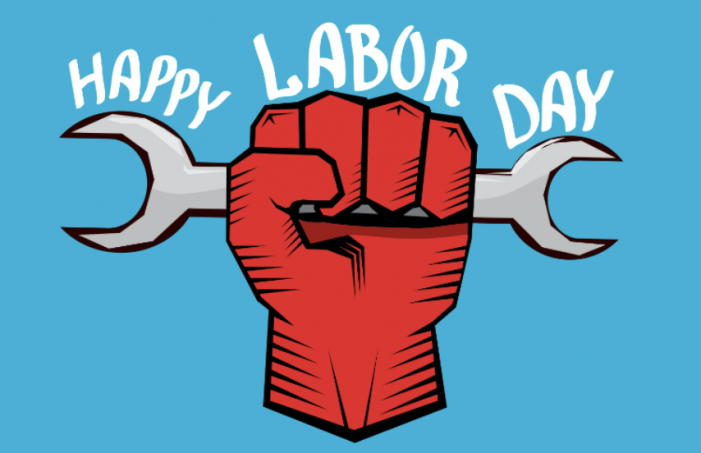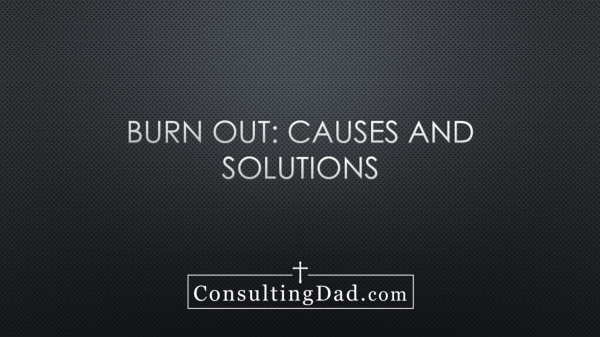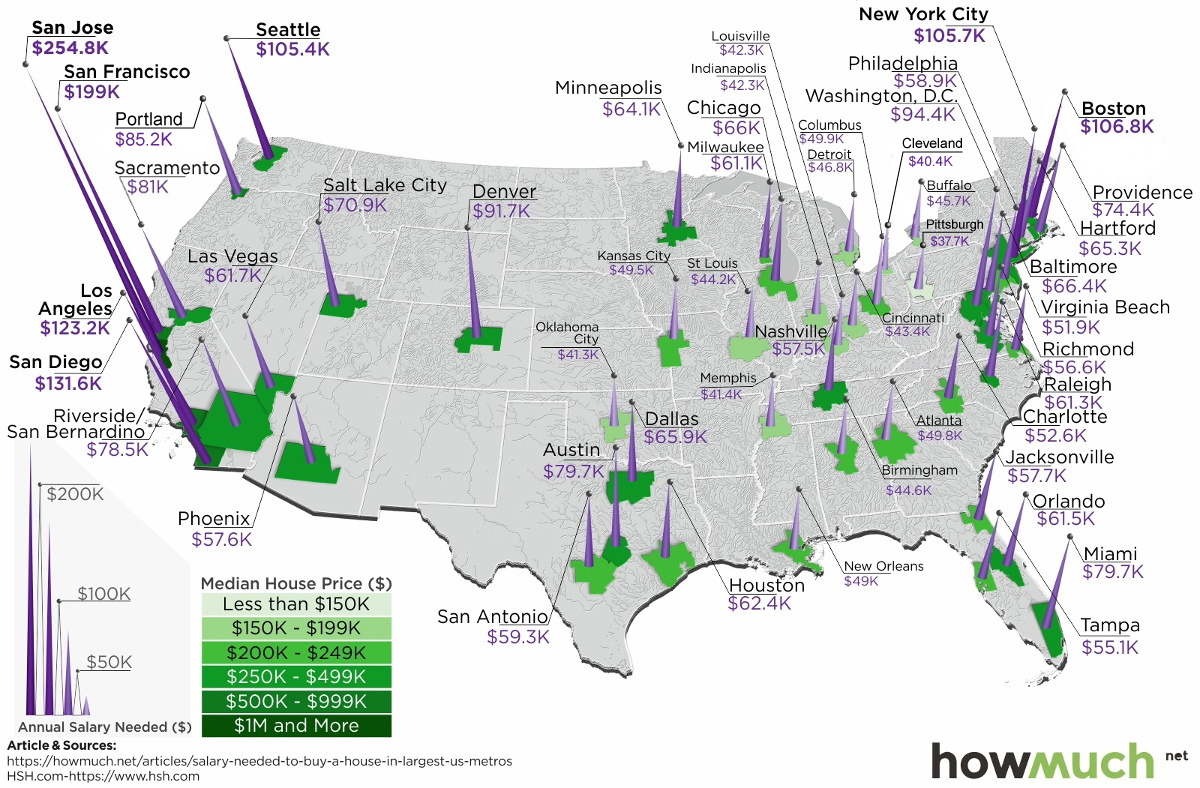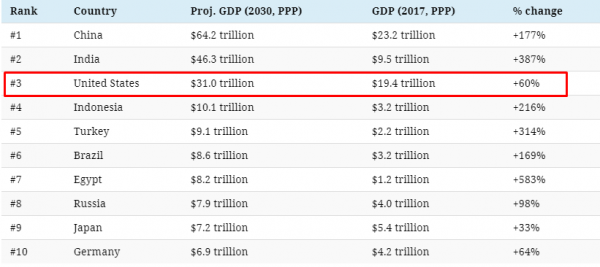- Home
- Author's Archive:
A Catholic Approach to the Statist Holy Day: Labor Day
The State has erected her high holy days, which include Labor Day. In this way she seeks to imitate in some way the Church, who for 20 centuries has maintained her own set of holy days, which provide the faithful for an opportunity to remember and celebrate important events and also to enjoy a time of leisure which is different from the normal condition we are born into, viz., work (Gen 2:15).
And yet, many Catholic men rejoice at the idea of a ‘day off’, or even the allusion of a ‘paid day off’, and celebrate these ‘holidays’ in a manner that they would never think of doing for true holy days, such as our ancestors might have. (It’s an allusion because you earned that money by working, not by taking time off, and you’re already being paid less as a result of the reduced input).
Therefore it could be said that Catholics have authentic holidays, and Catholics who practice the faith might find dozens of these scattered throughout the year that they could enjoy in lieu of the statists’ holy days.
For example, in the US we have the Holy Days of Obligation which all are familiar with:
All Sundays
Mary, Mother of God
Ascension of the Lord
Assumption of the Blessed Virgin
All Saints Day
Immaculate Conception
Nativity
But there are also many other important days in the year that a Catholic should, to the extent possible, treat as Holy Days, inasmuch as they should be set aside from all other ‘normal days’. These would include:
The day of your Baptism
The feast day of your confirmation Saint
The feast day of your parish’s patron Saint
The feast day of your children’s patron Saints
The feast day of your wife’s patron Saint
The Epiphany of Our Lord
The Baptism of Our Lord
Ash Wednesday
Solemnity of Saint Joseph
Annunciation
Holy Thursday
Good Friday
Holy Saturday
Holy Trinity
Corpus Christi
Nativity of St. John
Sacred Heart
Saints Peter and Paul
All Souls’ Day
A Catholic who treats these 25+ glorious days (that averages out to an extra two holidays per month, or many more depending upon the number of children you have!), as TRUE holidays will find that the thrill of the secular holidays just doesn’t quite compare. You can, after all, grill hamburgers most any day of the year, or spend time with the family, or read, sleep or pray, but with an even higher purpose in mind than the state offers you.
If you’ve grown up immersed in the secular lifestyle, the prospect of taking a day off to celebrate your baptism or the feast day of your child might seem odd, even radical, but how much more radical is it to celebrate secularism and the rise of the Marxist-backed unions, who bled working men dry while promising them a revolution and advocated violence, class warfare, abortion on demand and every cultural perversion we are now beset by?
Is this what we celebrate today?
Consider making this change to your lifestyle and encouraging your friends to do so. If you find yourself resistant and saying something like, “But my job….”, then change your job so that you can live as a Catholic and put your faith, family and manhood first.
Learn more about how men just like you are doing that here.
Earn San Jose Wages and Enjoy a Pittsburgh Cost of Living
The cost of living varies dramatically around the world and even from city to city here in the US. In this article the top 10 most expensive and top 10 least expensive metropolitan areas are identified.
The cheapest metros:
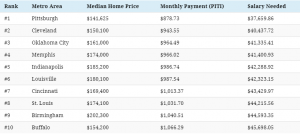
The most expensive metros:
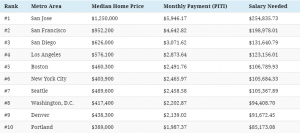
A house in San Jose might average $1,200,000 while in Pittsburgh it’s just $141,000. If the people in San Jose are spending that much more for homes, they’re probably spending more for most other items in their life, and earning higher wages (to be able to afford the higher cost of living).
Our parents and grandparents might have lived and worked in the same area their entire life, and not have had many options. You and I can work and live wherever we want.
So why not structure your life so you can earn San Jose level wages while enjoying a Pittsburgh Cost of Living?
How do you do that?
You can achieve that in a few ways. First, you get a job that allows you to work for an employer based in a higher-cost metro who pays those higher wages but allows you to work from home. So you work for an employer in a high cost area, but you live in a low cost area. Congratulations, you’ve just given yourself a substantial raise.
The next step in the evolution of this process is to ‘create’ your job by becoming a freelancer, contractor or consultant. You live where you want but you sell your time or services to the people who live in high cost areas and won’t flinch at your higher hourly rates or fees. It doesn’t matter to them that your costs are low, because it’s not your cost to provide the value they need that matters, but their cost to acquire it, and you’ll be competitive with their local alternatives.
The final step in this process is to build a business where you are selling products and services into these high-cost areas and you are managing the freelancers, contractors or consultants who are still on step one, and who do the work for you. The difference between their ‘step one’ wages and the ‘step two’ fees represents your profit margin. You earn money whether you work or not, and your earnings are no longer tied to the hours you work.
There’s nothing about this concept that is new-this is what entrepreneurs and business owners have done for centuries-except that now virtually anyone can do it from anywhere in the world WITHOUT CAPITAL. The new ‘rich’ is not cars, boats, houses and airplanes, but economic freedom and security. The Marxist class-warfare ideology of previous generations pitting workers against investors is now irrelevant, because you don’t need capital to start or build a business; you only need to solve problems for other people.
So ignore those guys who are shooting videos with bimbos in bikinis in their leased jet and pursue an authentic alternative for yourself.
I explain exactly how to do this and share three real examples in a webinar I created here. There is no cost to the webinar and there is nothing for sale.
When America Is #3
Visual Capitalist has produced a chart predicting that America will have the third largest economy (after China and India), by 2030.
There are lots of assumptions that go into these things, of course, but it’s a reasonable assumption based on population sizes, birth rates, growth rates and population age.
If we assume this is true, what does it mean for those of us in the aging west, and how to we prepare? Some questions:
How will your job or business be impacted when the US cannot dictate the terms of trade to our largest trading partners?
What will competition for your job or business look like when Asia floods our market with folks willing to work twice as hard for half the price (think of what Latinos have done to agriculture and lawn care, but now across the workforce, from welders to CEOs)?
How will your income be affected when the US can no longer issue debt at will and taxes skyrocket and services end?
What will your retirement planning look like if property values stagnate and the stock market loses 50% of its value?
How will you support your family when the Feds print money at will and inflation reduces your purchasing power by 50%?
What will you do when automation (robots and their software brains) replace the core responsibilities of your job (or your boss)?
There are answers to these questions, and there are tremendous opportunities. Make sure you have a plan that works when times are tough.
Be Smart: Embrace Change
The retail industry is undergoing dramatic change. This is a lesson for you and I:
1. You are not static, you were not born into a static world, you have no right to live in a perpetually unchanging existence. Why would you want to, anyway? In business and technology, embrace change. Don’t rage against it.
2. Position yourself in such a way that you benefit from the change you see and the change you expect. This needs to be a very conscious state of mind. The notion that you can ‘get a job’ and then ‘work hard’ and deserve to be employed at the same place for as long as you want is an unreasonable expectation-it’s “I deserve” instead of “I serve” way of thinking.
3. When you encounter obstacles, challenges or treatment you think is ‘unfair’, resist the temptation towards victim-thinking, and instead accept the reality and look for the opportunity created by that challenge.
Focus on solving problems for other people and you’ll always have a safe occupation.
How Much Sleep Are You Getting?
A young friend of mine brags about how little sleep he gets (five hours). I remember a time when I boasted about regularly going to bed after midnight and waking up at six; I thought I was getting a lot more done in my day and that this was proof of my commitment to my business and my growing family.
But this idea about working more hours and sleeping less represents a significant mental obstacle to success; if you think success is achieved merely by working more hours, you’re stuck in a wage slave mentality. The wage slave exchanges his time for federal reserve notes and concludes that more hours=more money. That’s true in the short-term, but it’s limiting, both because you’re unlikely to make significant positive changes and because you only have so many hours to ‘sell’.
True wealth and success are rarely achieved by guys who run faster on the hamster wheel. Solving big problems for people quickly comes through the application of your intellect, often layered with outstanding collaboration with others. It’s creativity and problem solving, not necessarily long hours, that creates lifestyle-changing, business-saving solutions. It’s working effectively with others and inspiring them to do greater things that produces exceptional outcomes.
True, if you’re just turning a knob at a factory or walking in circles around a mall or driving for Uber you don’t need to operate at your best and highest purpose, but the odds are if that’s your current situation and you’re reading this, you’re not happy with the status quo.
If you look at the most successful businessmen in the world, they did not create the wealth they have by working many more hours than others, or by charging more per hour than anyone else, but by creating more value for more people more quickly. Anecdotally, the rich people I know value their health more than almost anything else. What does that tell you?
Physicians and sleep experts say most people need between seven and eight hours of sleep. If you’re sick or injured, you might need more. If you’re old, you might need less (although a lot of old people sleep less at night because they don’t sleep well, and then are often napping later in the day in what is known as polyphasic sleeping). If you can’t sleep for eight hours at night, or have reasons that prevent this, then taking a nap is exactly the thing to do so that your total sleep time gets to that magic number.
Consistently getting less sleep than the ideal deprives your brain of the critical rest and restoration process you need. You might think that by cheating yourself of one or two hours that you’re getting more done, but the odds are that you are not performing at your peak and that you’re actually swapping high value sleep time for low productivity waking time.
There are some true mutants who can perform at a high level for long periods of time with less. However, the most successful athletes in the world have discovered a direct correlation between more sleep (sometimes as much as 12 hours!), and higher performance levels. These men and women value outcomes more than anything else and through trial and error they’ve determined what the most important factors are. You can benefit from their expense and experience without going through all the same diagnostics.
We all need to sleep less on occasion, when our duties demand it, but if you are really worried about serving others well and doing great things, focus on quality activity and not quantity. Structure your diet, exercise, sleep patterns and life choices around performing at your best and highest level and not simply maximizing the number of hours you’re awake.
How Are You Preparing for the Recession?
A recession is coming, and there is a high likelihood it will happen this year.
Short-term yields moving ahead of their longer-duration counterparts is seen as a sign that growth will be higher now than it will be in the future. New York Fed research considered by many to be seminal on the spread between yields found that the most-telling relationship was between the 3-month and 10-year notes, though many market participants still watch the spread between the two- and 10-year notes, which was about 10 basis points Friday morning.
In plain English, you now earn more interest lending to the government in the short term than you would the long term. That’s upside down, hence ‘inverted’.
Why would anyone be willing to lend money for 10 years at a lower interest rate than they would for just three months?

This is a classic indication of a recession in our near future. We’re actually overdue. These cycles of boom and bust are part of the economic world we live in since the Federal Reserve was created in 1923. The Federal Reserve attempts to manage interest rates and the money supply and thus, economic growth, international trade and unemployment. They don’t do a very good job of it.
So, what are you doing to prepare for the recession?
Some jobs and industries fare better in negative economic environments than others. If you’re in a particularly vulnerable industry, how will you handle reduced earnings? What will you do if you lose your job or your business?
If you’re already in a business that will do well during negative economic times, what are you doing to take full advantage of this downturn, to grow your business through acquisitions or organically, so that you’ll be in a position to help others who are less fortunate?
I’ve always believed in strategies that perform well in bad times.
Watch our free webinar to learn how.
